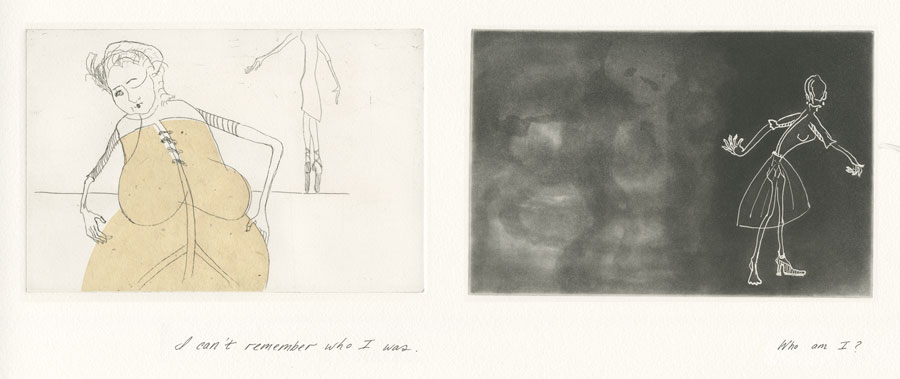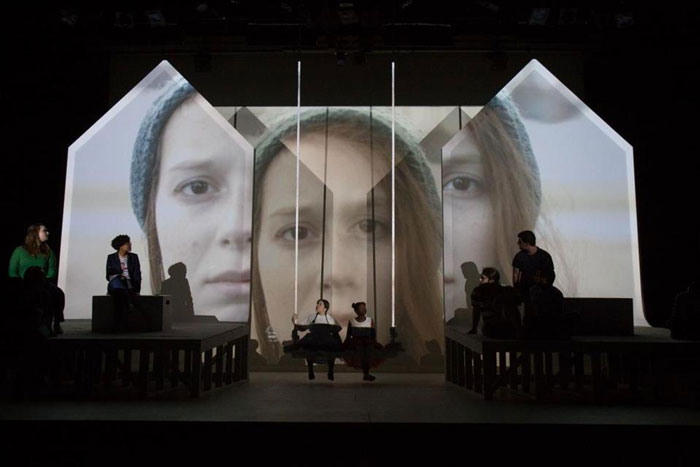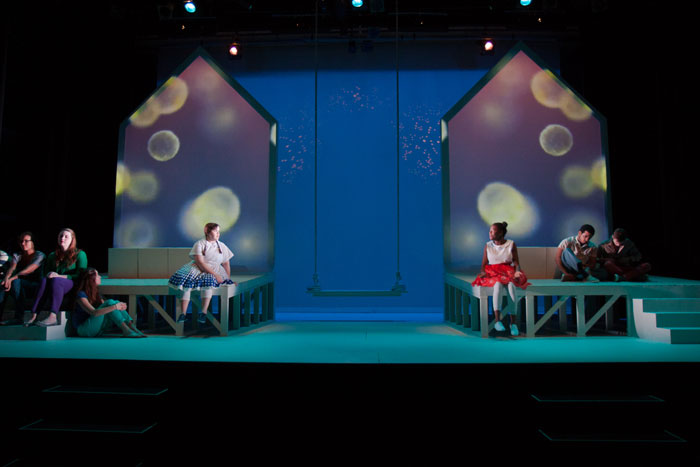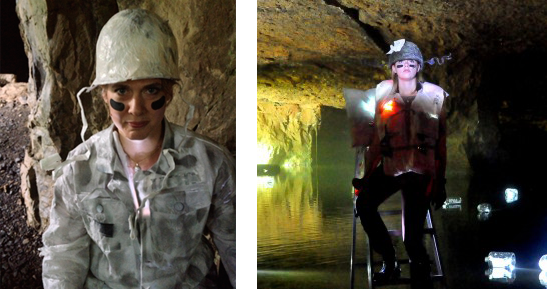Collaborations
A Cosmological Reckoning at A Certain Age (in progress)
a hand-printed artist book accompanied by dialogue, aphorisms, and song
with printmaker and graphic designer Claudia Fieo
What Happens When
a devised ensemble play funded by the U.S. Department of Justice’s Office on Violence Against Women
I was asked to write this play by Wheaton College colleagues looking for an alternative way to educate students about sexual misconduct in campus life. Using Sociodrama and Theatre of the Oppressed techniques, I worked with a group of nine students to develop a play based on scenarios we created, they spontaneously performed, and another student video recorded. From 300 transcribed pages of their scene work, I framed the play (in their words) and added multimedia elements I developed with another group of students. The play, directed by Stephanie Burlington Daniels, was performed in April 2015 as a Wheaton mainstage production, with each performance being followed by a conversation about sex, sexual misunderstanding, sexual misconduct, and the full range of related topics the audiences chose to engage in with us.
The Mine Project — Dada Spill
a multimedia installation and performance
The Mine Project is the result of years of imagining by visual artists Mau Schoettle and Kate Hamilton about what could be done in Widow Jane Mine (Rosendale, NY) that would embrace its unique dreamlike environment along with the truth of its hard history. Dada Spill is the first in a series of ongoing events presented under The Mine Project umbrella.
As part of the event, I directed Elana Greenfield’s haunting, hilarious, and transcendent play, Wrench, on July 28, 2013. Costumes: Kate Hamilton Set pieces: Mau Schoettle
(l-r): Jessica Goldring, Caroline Osborn
(l-r): Caroline Osborn, Alissa Cordeiro
Axis Mundi: Levittown
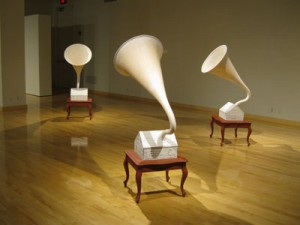 A collaboration with sculptor Holly Laws who created an installation of miniature Levitt houses based on the post-WWII affordable housing enclaves built in the late 1940s for veterans and their families. I contributed memory-dialogues to be looped and broadcast through small speakers embedded in the tiny houses. Some overlap, others are overheard (and responded to) by those in neighboring houses, and others still are in dialogue with each other. The dialogues reflect moments in each post-war decade until today, reflecting on the ways in which those houses (and attitudes within them) evolved as the 20th century unfolded, bringing the houses further and further away from their original use for veterans. I lived in one of the Levitt houses on Long Island in the 1970s and felt particularly qualified to mark that decade, but enjoyed calling up the ghosts of previous decades, and imagining into those that followed.
A collaboration with sculptor Holly Laws who created an installation of miniature Levitt houses based on the post-WWII affordable housing enclaves built in the late 1940s for veterans and their families. I contributed memory-dialogues to be looped and broadcast through small speakers embedded in the tiny houses. Some overlap, others are overheard (and responded to) by those in neighboring houses, and others still are in dialogue with each other. The dialogues reflect moments in each post-war decade until today, reflecting on the ways in which those houses (and attitudes within them) evolved as the 20th century unfolded, bringing the houses further and further away from their original use for veterans. I lived in one of the Levitt houses on Long Island in the 1970s and felt particularly qualified to mark that decade, but enjoyed calling up the ghosts of previous decades, and imagining into those that followed.
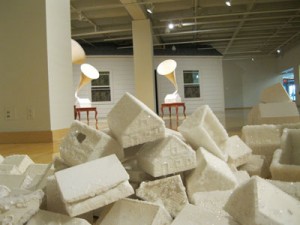 The exhibition has traveled to University of Central Arkansas’ Baum Gallery, Wheaton College’s Beard and Weil Galleries and, most recently, to St. Olaf College’s Flaten Art Museum.
The exhibition has traveled to University of Central Arkansas’ Baum Gallery, Wheaton College’s Beard and Weil Galleries and, most recently, to St. Olaf College’s Flaten Art Museum.

